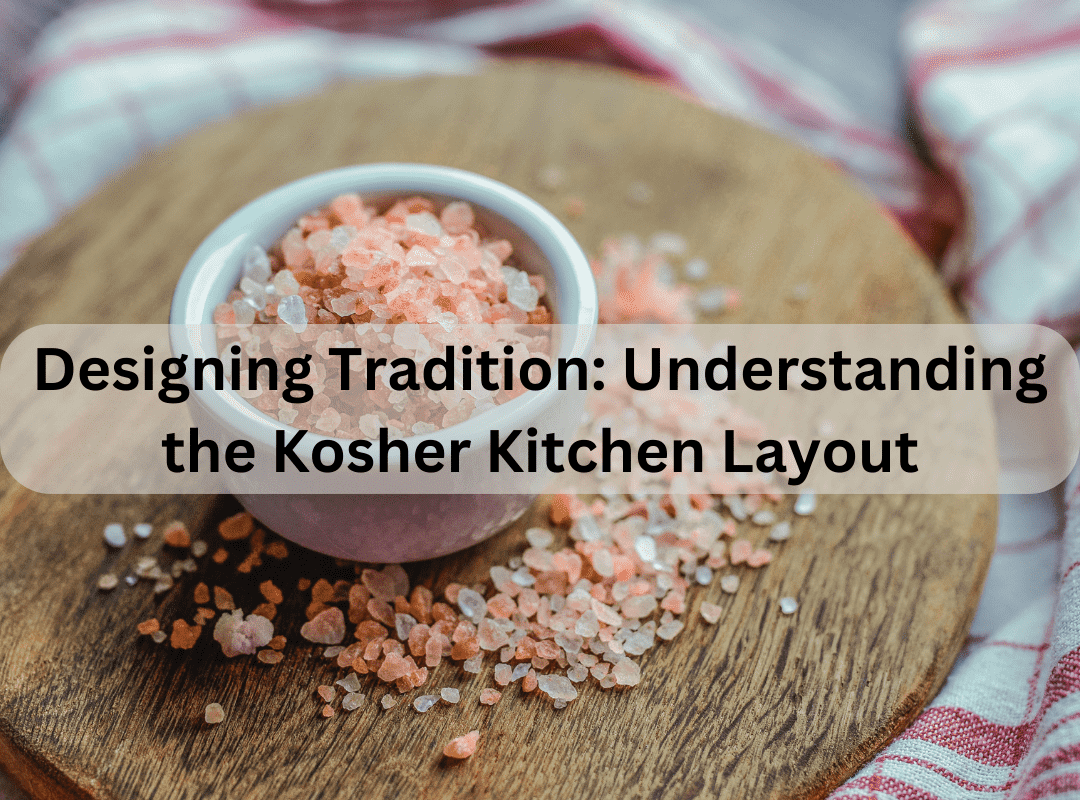Introduction For What Is A kosher kitchen layout
A kosher kitchen, rooted in the principles of kashrut—the set of Jewish dietary laws—embodies a unique and meticulous approach to food preparation, storage, and cooking. Guided by a deep sense of tradition, a kosher kitchen layout serves as a practical manifestation of these laws, emphasizing the separation of meat and dairy products and the observance of specific rules governing utensils, appliances, and even cleaning practices.
In this blog, we delve into the intricacies of a kosher kitchen, shedding light on the key principles that govern its design and functionality, creating a space that aligns with the religious beliefs and practices of those who adhere to the laws of kashrut.
Q1: What is a kosher kitchen layout?
A1: A kosher kitchen layout adheres to Jewish dietary laws known as kashrut, governing food preparation, storage, and cooking.
Q2: What are the key principles of a kosher kitchen?
A2: Key principles include separating meat and dairy, having designated utensils for each, and ensuring the kitchen is kept kosher through proper cleaning and observance of dietary laws.
Q3: How is separation maintained in a kosher kitchen?
A3: Separate countertops, sinks, and utensils are designated for meat and dairy use to prevent cross-contamination.
Q4: Are there specific requirements for appliances in a kosher kitchen?
A4: Yes, some kosher kitchens have separate ovens, stovetops, and dishwashers for meat and dairy use.
Q5: What is the purpose of a kosher sink in the kitchen?
A5: A kosher sink is designed with separate compartments to facilitate the washing of meat and dairy dishes without cross-contact.
Q6: Can a kosher kitchen have two dishwashers?
A6: Yes, some kosher kitchens have two dishwashers—one for meat dishes and one for dairy dishes.
Q7: How is kosher food storage managed in a kosher kitchen?
A7: Separate areas of the refrigerator and pantry are designated for meat and dairy products to maintain separation.
Q8: Are there specific rules for kitchen utensils in a kosher kitchen?
A8: Yes, utensils must be designated for either meat or dairy use, and separate sets are typically used to adhere to kosher laws.
Q9: Can a kosher kitchen have a dairy and meat side-by-side refrigerator?
A9: Yes, but it should have separate compartments or be used with designated containers to prevent mingling of meat and dairy.
Q10: How is kashering performed in a kosher kitchen?
A10: Kashering involves the process of making utensils kosher by cleaning, immersing in boiling water, or, in some cases, using a blowtorch for certain metal items.
Q11: Is there a specific layout for the stove in a kosher kitchen?
A11: Some kosher kitchens have a double oven or a stovetop with separate burners for meat and dairy cooking.
Q12: Can a kosher kitchen have a central island?
A12: Yes, but it may be used with caution, and certain guidelines, such as not placing hot meat and dairy dishes together, should be observed.
Q13: How is cleanliness maintained in a kosher kitchen?
A13: Regular cleaning is crucial, and some kosher kitchens have separate cleaning supplies for meat and dairy areas.
Q14: Can a kosher kitchen be used for non-kosher purposes?
A14: Ideally, a kosher kitchen is dedicated solely to kosher food preparation, but some adjustments may be made for non-kosher use with proper cleaning and adherence to guidelines.
Q15: Are there specific rules for the use of kitchen linens in a kosher kitchen?
A15: Yes, separate sets of kitchen linens are used for meat and dairy, and they are changed accordingly to maintain kashrut.
Q16: How does a kosher kitchen accommodate the preparation of pareve foods?
A16: Pareve, or neutral, foods that can be consumed with both meat and dairy can be prepared on designated surfaces and with utensils.
Q17: Can a kosher kitchen have open shelving?
A17: Yes, but it should be organized with separate areas for meat and dairy utensils and dishes.
Q18: Are there specific guidelines for the placement of meat and dairy dishes on a table in a kosher kitchen?
A18: Yes, meat and dairy dishes should be served from separate platters and not placed side by side on the table.
Q19: Can a kosher kitchen include a non-kosher microwave?
A19: Ideally, all appliances should be kosher, but if a non-kosher microwave is used, it should be kept separate and covered for kosher food.
Q20: How does a kosher kitchen accommodate the observance of Shabbat and holidays?
A20: Some kosher kitchens have features like Shabbat mode on appliances, and preparations are made in advance to allow for observance without violating kashrut laws.
Conclusion On What Is A kosher kitchen layout
Our exploration of the kosher kitchen layout, it becomes apparent that beyond its functional aspects, this culinary space is a testament to the rich tapestry of tradition woven into daily life. The careful separation of meat and dairy, the designation of specific areas and utensils, and the meticulous observance of kashrut principles reflect a commitment to maintaining a sacred and kosher environment. In a kosher kitchen, every element, from the layout to the appliances, contributes to the preservation of religious observance and cultural heritage.
As families gather around the table in these kitchens, the rituals of food preparation and shared meals become a continuation of a longstanding tradition, connecting generations and fostering a deep sense of identity within the Jewish community.




